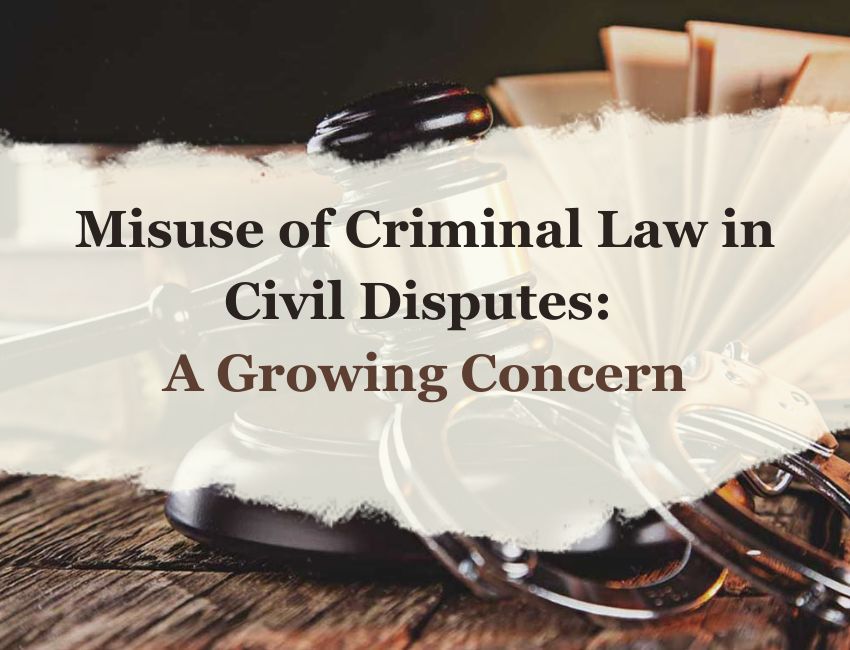1. We have heard Sri Ashutosh, Advocate appearing on behalf of the appellant Nanhey Singh @ Dinesh Singh, challenging the correctness of judgment of acquittal dated 11.10.2006, passed by learned Additional Sessions Judge, Court No. 3, Bijnor in Sessions Trials No. 356 of 2005 and 160 of 2006, by which respondents Kuldip Singh and Nagendra Pal were acquitted of offence u/s 302 IPC, who is neither the informant of the case nor was examined as a witness. He has made a statement in his affidavit that he was the cousin brother of the deceased Jabbar Singh, who was the son of informant Babu Ram, examined as PW-2 in the Court below. The "party interested" or "a victim" could have a locus standi of preferring an appeal and we for that reason, while referring to the provisions of Section 372 Cr.P.C., recall the judgment of the Supreme Court in
2. The other aspect which deters us from applying our jurisdiction u/s 372 Cr.P.C., is the Law of limitation, which has intervened by virtue of 2400 reported days of delay in filing the present appeal. Section 372 Cr.P.C. does not provide for any period in which the appeal under that particular provision should be filed, though the other provision u/s 378 Cr.P.C., which speaks of filing of an appeal against acquittal in three different categories of cases does so. The first category could be of such cases, which have been investigated into by Delhi Special Police Establishment Act, i.e., by the Central Bureau of Investigation, the other category of cases are those which could have been investigated into by the State Police through its investigating wing and the third category of cases would be of those appeals, which could be arising out of judgments of acquittal based on trials, the prosecution in which had been lodged by virtue of filing a complaint petition as defined u/s 2(d) of the Cr.P.C., i.e., by the complainant. In case, a complaint has been filed by a public servant, the period of limitation, set down by Section 378(5) Cr.P.C., is of 6 months, whereas in other cases the appeal has to be preferred and filed within 60 days.
3. We have already noted that provisions of Section 378 Cr.P.C. is related to special categories of cases on account of very categorisation made by that provision. Thus, we have no hesitation in saying that the provision of limitations, which are prescribed by Section 378 Cr.P.C., could not be attracted to an appeal, which could have been filed u/s 372 Cr.P.C. by virtue of the Proviso, which was added by the legislature through the Amending Act No. 5 of 2009. Then, the simple question could be as to how could the Courts be ascertaining as to what should be the limitation within which an appeal should be preferred by any person, who is entitled by virtue of proviso to Section 372 Cr.P.C. to bring an appeal before any appellate Court. In our opinion, the provision of Section 378 Cr.P.C., as we have already noted, is special in nature, which is attracted only in cases of appeals, which are likely to be preferred or which have been filed in three different categories of cases, which we have already indicated, may be a case different from that which is spoken of by Section 378 as in that case even if the right of appeal has been created in favour of the complainant, he has to exercise that right within a particular period by virtue of Section 378(5) Cr.P.C., which situation is not postulated by proviso to Section 372 Cr.P.C., as such, in our opinion, the general provisions of the Limitation Act have to be consulted for ascertaining the period, which could be attracted for filing an appeal u/s 372 proviso Cr.P.C.
4. We refer to Article 114 of the Limitation Act, which refers to Section 417(2) of the Cr.P.C., that, the Cr.P.C. of 1988 and that is equivalent to present Section 378 Cr.P.C. In that case the period is prescribed as 90 days, but the provisions u/s 372 Cr.P.C. being a new one, which was brought out by virtue of Amending Act No. 5 of 2009 and on consideration of the very Article 114 of the Limitation Act, we find that it speaks of an appeal from an order of acquittal and thereafter, makes categorisation of different appeals under different headings. We have to assume that the Legislature at the time of the framing Article 114 of the Limitation Act in absence of the previous proviso to Section 372 Cr.P.C., had nothing before it to mention that particular provision as one of such occasions on which the law of limitation shall be considered for computing the period of limitation. But, the provision speaks of appeals against acquittal and we are of the opinion that a period of 90 days should be applicable also to appeals u/s 372 proviso Cr.P.C.
5. The delay is of 2400 days. We have already noted that the appellant, who has filed the petition u/s 5 of the Limitation Act, is a rank outsider, who does not have any locus standi to file the appeal. This is one circumstance and disability by which the appeal could not be maintained.
6. Inspite of the above, we have considered the merit of the case.
7. The case related to the murder of Jabbar Singh, the son of PW-2 Babu Ram. The informant was not an eye-witness, as appears from the story put down by him in the written report as he very categorically stated that he was informed about the incident telephonically by PW-4 Manpal. The story was that while taking his meals with PW-1 Hitesh, and PW-4 Manpal, the deceased was shot at and killed by the respondents in the dhaba, owned by PW-5. Neither PW-1, who was said to be an eyewitness nor PW-4, who was another eyewitness, supported the prosecution story, rather they stated that they were not taking their meals in the hotel owned by PW-5 and had not seen the murder of Jabbar Singh being committed in the said hotel. The hotel owner PW-5 Adesh Kumar also came to state that the murder, though, had been committed in his hotel, but he could not identify the criminals and as regards the two respondents, he was very categorical that the two had not committed the crime. We have already noted that Babu Ram, was not an eye-witness. In view of the above evidence, there was no possibility for any Court to have come to a conclusion that anyone could be said to have committed the offence.
8. Learned counsel appearing for the appellant was submitting to us that only because the Investigating Officer had not been examined, there was a good ground for him to file the present appeal.
9. We regret to note if there was no evidence about the complicity of any of the accused indicating that they could have committed the offence and if the witnesses were turning hostile by failing even to identify the accused persons, it would have been an exercise in futility that the Investigation Officer should have been summoned. Mere non-examination of the Investigating Officer does not appear giving rise to any cause for anyone to question the judgment of acquittal in the light of the evidence, we have just noticed.
10. The judgment, passed by the learned trial Judge was the only result which could have been obtained under the facts and circumstances of the case. The appeal appears not only devoid of merit, but a frivolous exercise, which has consumed the precious time of the Court and, as such, we impose a cost of Rs. 10,000/- to be realized from the appellant Nanhey Singh @ Dinesh Singh, s/o. Late Chotey Lal, r/o. Village Harthala, near Jatowala Mandir, police station Civil Lines, District Moradabad, by procedure as set down for realization of fine under the Cr.P.C.. The appeal fails and is dismissed at the admission stage itself.

